MARIANI’S
September
30, 2007
NEWSLETTER
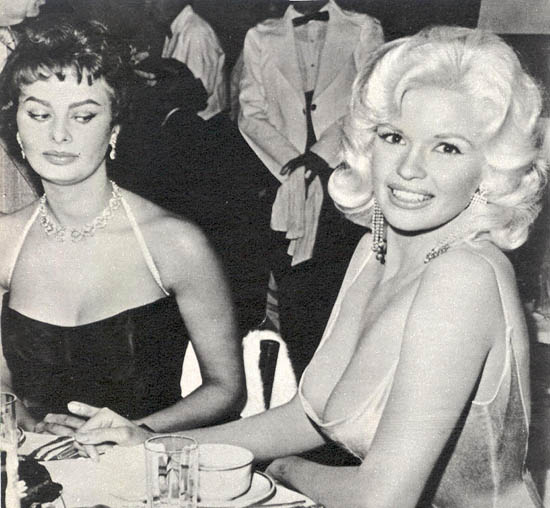
Sophia Loren and Jayne Mansfield (circa 1957)
NEWS! TO READ MY NEW BIWEEKLY COLUMN FOR ESQUIRE, CLICK ESQUIRE.COM.
ARCHIVE: Readers
may now access
an
Archive of all past newsletters--each annotated--dating back to July,
2003, by simply clicking on www.johnmariani.com/archive
SUBSCRIBE AND
UN-SUBSCRIBE: You may subscribe anyone you wish
to this newsletter--free of charge--by
clicking here.
In
This Issue
NEW YORK CORNER: Two Neighborhood Restaurants: Markt and East River Café by John Mariani
NOTES FROM THE SPIRITS LOCKER: Tequila by John Mariani
QUICK BYTES
WHAT'S NEW IN ATLANTA?
by Suzanne Wright and John Mariani
KEVIN RATHBUN STEAK
404-524-5600
www.kevinrathbun.com
By Suzanne Wright.
 And then
there were three: three great
restaurants
under the creative stewardship of
And then
there were three: three great
restaurants
under the creative stewardship of In 2004 Rathbun almost single-handedly spurred renewed interest in
The chef (below), who grew up in
Now surrounded by new residential development, the building was once a cotton warehouse, a Clorox bleach factory and a musician’s rehearsal hall. It’s been magnificently restored by The Johnson Studio, the group responsible for the cool interiors at both Rathbun’s and Krog Bar. The entrance is covered by canvas; look closely before you swing open the glass door: under the kudzu you’ll see a wall of graffiti left from the previous tenants. Inside, the dark wood ceiling and floors, hand-cut stacked walnut wood walls, black leather chairs and booths, original iron columns, exposed brick, open kitchen and monochromatic chocolate color scheme lend it a masculine, speakeasy character. The only touches of color are the suspended red glass panels that separate the bar from the dining room and the servers' yellow shirts. The most eye-catching details? The organic-looking chandeliers that resemble silver branches and twigs made of brushed aluminum, and a huge portrait of Rathbun himself. Downstairs, the 100-year old cellar is home to the chef’s cookbook library, while the wraparound “beltline patio” has large, comfortable chairs. Perfect if you want a cigar after your steak.
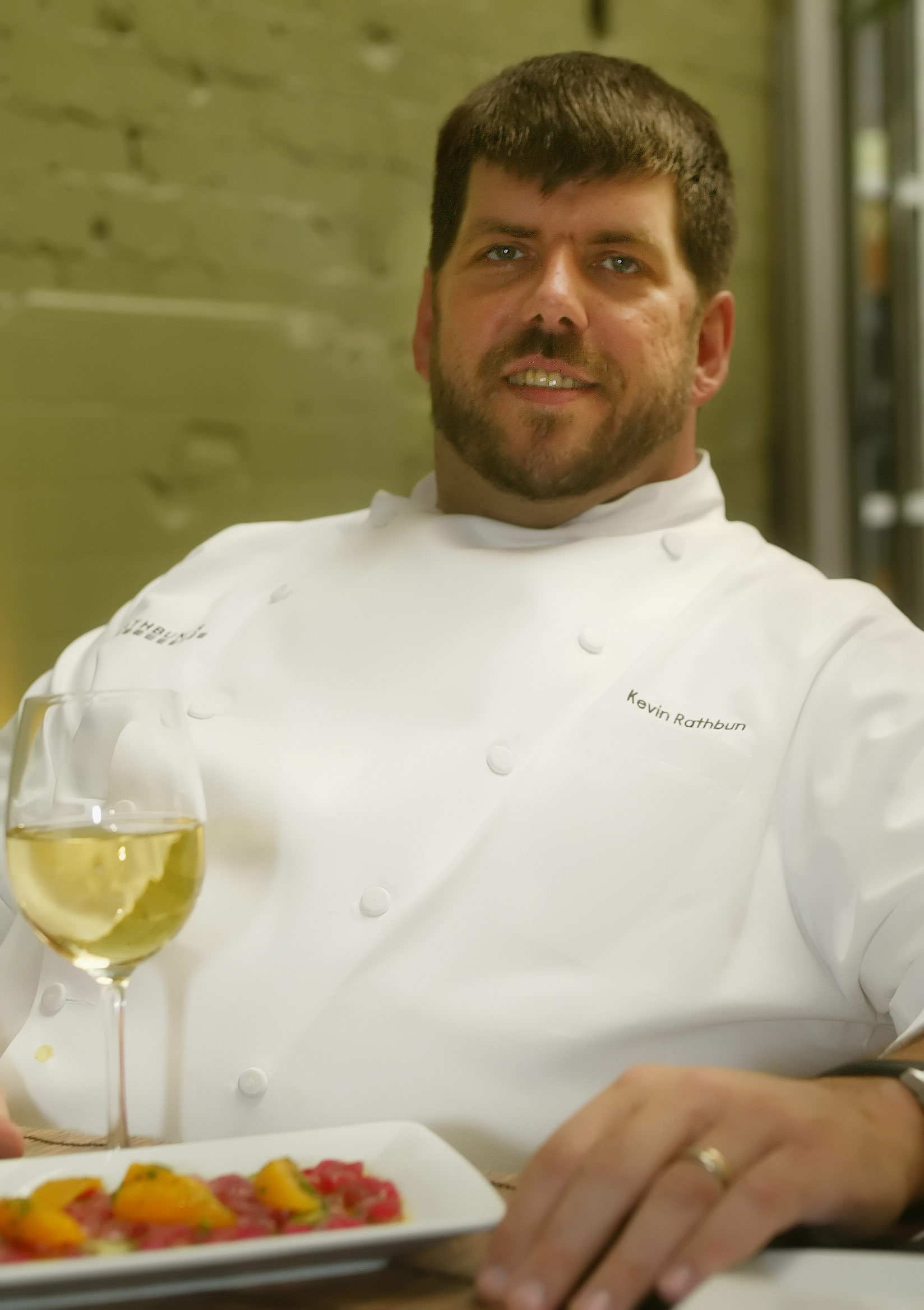 As
at Rathbun's other restaurants, the KRS menu
is extensive, with much to tempt a diner. Dishes are grouped by
category: hot appetizers, cold appetizers, chilled seafood
towers,
salads & soups, USDA Prime meats, fish and shellfish, alternative
selections and sides. My generous pal Susan sprang for a bottle
of red,
the mouth-filling Dasche 2005 Zinfandel ($55), and as we sipped, we
made our
dinner choices. The lightly fried oysters and okra ($8.75) were
the best either
of us had ever had--buttery and sweet, the okra melting
in our mouths (not a trace of the dreaded green slime!), the Creole
rémoulade a zingy dip. We
both could have eaten a platter. The
As
at Rathbun's other restaurants, the KRS menu
is extensive, with much to tempt a diner. Dishes are grouped by
category: hot appetizers, cold appetizers, chilled seafood
towers,
salads & soups, USDA Prime meats, fish and shellfish, alternative
selections and sides. My generous pal Susan sprang for a bottle
of red,
the mouth-filling Dasche 2005 Zinfandel ($55), and as we sipped, we
made our
dinner choices. The lightly fried oysters and okra ($8.75) were
the best either
of us had ever had--buttery and sweet, the okra melting
in our mouths (not a trace of the dreaded green slime!), the Creole
rémoulade a zingy dip. We
both could have eaten a platter. The We ordered the dry aged steak for two ($64)--they also serve wet-aged beef--with two accompaniments, the house steak sauce (rather ho-hum) and the Stilton bleu cheese butter (delicious). Dry aging concentrates the flavor; it’s costly, but absolutely worth the expense. I don’t know if I’ve had a better piece of beef: rich in flavor and meltingly tender. Although presented bone-in, the steak had been thoughtfully carved into slices. Our sides, a cauliflower grain with aged
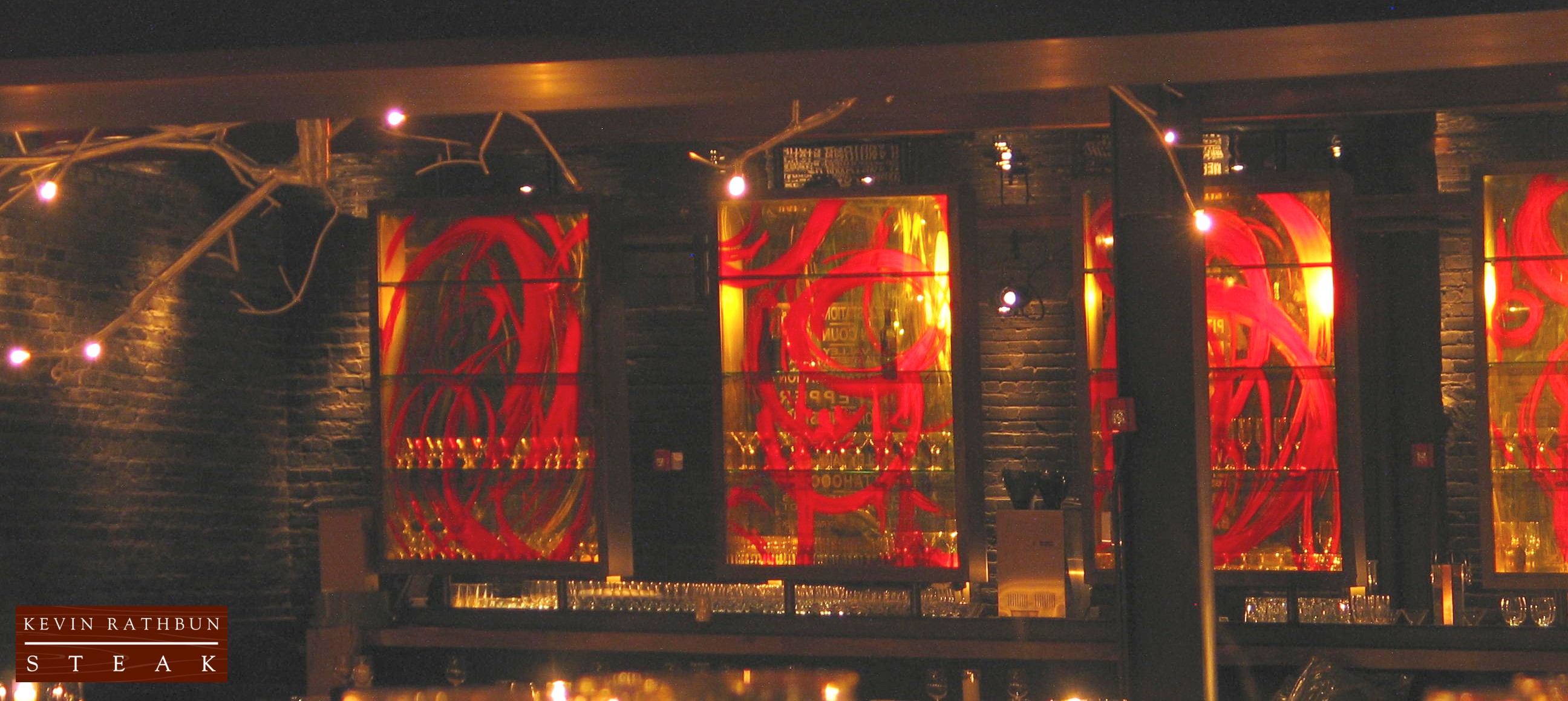
The minor wobbles of a newly-opened establishment—a server not familiar with the wine list, doggy bags indiscreetly plunked onto the center of the table—are sure to be ironed out as the young staff finds its footing. Yet a revisit three weeks later was a whole different—and disconcerting—experience. A host gaffe–unable to find our reserved table despite a series of repeated computer strokes until Chef Rathbun got involved—got things off to a shaky start. My guest whipped out a handheld device and revealed a decibel level of nearly 90—straining the conversation of our trio. A request for a daiquiri was met with a wide-eyed stare before my guest sketched out the drink’s proportions; the resulting cocktail was nevertheless a disappointment.
The food faltered as well. The cannelloni was mushy; the seafood platter overpriced and ho-hum at $55; the steak, just so-so; the chop, overcooked; the onion rings, rather wizened; three desserts, including the cheesecake, forgettable and abandoned. On closer inspection, the wine list was weak (especially the whites) and without focus, and most infuriatingly, the service was lackadaisical and the pacing terribly off (the bill took nearly 10 minutes to process). It was a tense three hours.
What’s going on? Have things devolved? Is the team overstretched? I don’t know, but at these prices and with his reputation, Rathbun, a longtime favorite of this reviewer, has to crack the whip and drive consistency in both kitchen and dining room. I’d hate for him to lose his Midas touch. Atlantans are notoriously fickle when it comes to their food.
Kevin Rathbun Steak is open for dinner only, Mon.-Sat.
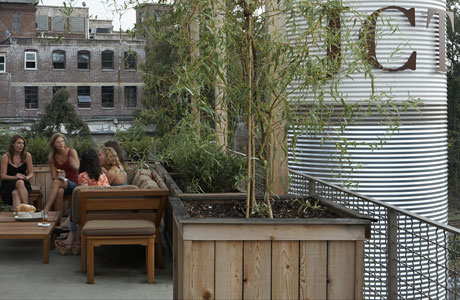 JCT.KITCHEN& BAR
JCT.KITCHEN& BARWestside Urban Market
1198 Howell Mill Road
404-355-2252
www.jctkitchen.com
by John Mariani
The acronym stands for "Junction" for good reason: It's located next to a former railroad junction, and it's a pretty sweet thing to hear the trains go slowly by, which you can do from the outdoor verandah here (left).
Chef-owner Ford Fry (right) might well have put a barbecue in this location and done very well, but his aspirations and talents run far higher while he maintains a true and authentic link to the region's culinary traditions. This is a place you come to for "Southern Farmstead Cooking," based on :seasonal ingredients harvested freshly [sic] from the fields straight to the kitchen and handcrafted into traditional
That's a fair description, for here you start off with Georgia white shrimp and grits with crusty bread for sopping up the juices, and believe me, you'll be using your fingers. Everything gets a little refinement here, like Fry's "Grown Up" Grilled Cheese, made not with yellow American but with with various cheeses and roasted tomato on buttered brioche, with a cup of vivid tomato soup. He does like going upscale too, as with his foie gras and chicken liver mousse (not an item you'd find at Pittypat's Porch downtown), with apple butter slathered over grilled country bread.
Salads are big and sunny, the "JCT Salad" a riot of perfectly tender green beans, crisp Romaine lettuce, spiced pecans, apples, and a wonderful buttermilk dressing.
For main plates, go with the sea scallops with buttered potato dumplings dressed with warm bacon and pea greens with a rich veal jus. There's a fine bone-in strip steak with turnip gratin and Gouda cheese, and the butterfish pan roast with corn and
 goat's cheese agnolotti, lady peas, and preserved
tomatoes is a delicious and convincing symbol of the way Fry melds the
old and the new into a seamless winner of a dish. He also does
fried chicken that has become something of a signature here.
goat's cheese agnolotti, lady peas, and preserved
tomatoes is a delicious and convincing symbol of the way Fry melds the
old and the new into a seamless winner of a dish. He also does
fried chicken that has become something of a signature here.Desserts on my visits included plump blueberry beignets with crème fraîche, good old ice cream sandwiches with warm chocolate sauce, and that neglected Southern classic, coconut cake, here moist and sweet and wonderful in every bite.
JCT. is a pretty sleek production with its own link to Southern architecture in the use of wood, metal,tile, and leather materials. Mirrors tilt, bistro-style, to open the wide dining room even more, and wrought-iron metal rods hold light linen lampshades strung on concrete columns. At the front is a 12-foot long poured concrete bar with leather barstools. It's a big place--165 seats inside and another 100 outside--and gets noisy easily, with few soft surfaces, and on my visit with a light crowd, there were considerable waits between courses.
Fry is a Houston native and spent several years at EatZi's in Dallas before opening JCT. I suspect he's here at the junction for a long hall.
JCT. Kitchen & Bar is open daily for lunch and dinner; Prices for appetizers are $5-$9, salads and sandwiches $6-$9.50, main courses $16-$29.
TAMARIND SEED THAI BISTRO
404-873-4888
www.tamarindseed.com
Tamarind Seed Thai Bistro has been packing ‘em in at lunch and dinner since opening last June. Until earlier this spring, long-time restaurateurs

On a recent Saturday night visit, a friend and I arrived unfashionably early—
The glass-walled, L-shaped space itself is rather awkward, though it has been gracefully transformed with a Zen sensibility of warm woods, a chocolate-and-orange palate and subtle touches like Thai sculpture in wall niches and glass jars filled with spices. Solo diners will appreciate the counter dining and communal table. And the bathrooms deserve special mention for their beauty: candlelight, fresh orchids, individually folded disposable towels.
The menu is unchanged from the original location and includes appetizers, salads, soups, noodle and rice dishes, vegetable plates and Chef Nan’s signature creations. The food is impeccable. Those who favor bold flavors should start with the thod-mun-pla, spicy fish cakes, lightly battered and silver-dollar sized, pleasantly spongy, marinated with kaffir lime leaves and served with a curry paste and cucumber salad. The larb-kai, a salad of minced chicken with ginger, lime juice, scallions and roasted crushed jasmine rice has a pleasant kick and though is not as moist as the pork version, a squeeze of the garnish lime remedies that.
For entrees, the whole fried snapper with basil sauce is a showstopper, dramatically served with head and tail intact, presented curled on a plate with fish chunks heaped in the center. Sweet, sour, hot and salty at once, it is enough to feed two and marries beautifully with the roast duck panang curry. I especially urge those whose previous encounters elsewhere with the fowl have been either greasy or gamy to order this stellar Maple Leaf Farms duck. Boneless medallions are topped with a luscious, sweetly spicy (but not at all hot) curry sauce. The
The last of the late evening summer light flooded the restaurant as we made our way into the parking garage. Late diners were filing in, early diners filing out with us—a scene that will doubtless be repeated for years to come. Welcome back, Tamarind.
The restaurant is open daily for lunch and dinner. Appetizers run $4-$7, salads and main courses $10-$29.
--Suzanne Wright
CHOCOLATE BAR
201 West Ponce De Leon Avenue
Decatur, Georgia
404-378-0630
www.thechocolatebardecatur.com
If Midtown’s Chocolate Pink and Inman Park’s Krog Bar had a love child, it would be Decatur’s Chocolate Bar. A friend recommended it for a light repast following a leisurely afternoon. Recently opened on Ponce de Leon next to Ted’s
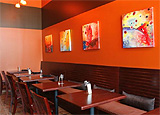
We dined on a Wednesday night; the bonus was live classical music from guitarist Edward Weir. The deep pumpkin walls, high ceilings and simple dark wood tables and chairs are understated. Need to lift your serotonin levels? There’s a handsome bar where you can dine solo. Need a hostess gift? Check out the packaged cookies. The focal point of the room is a glass case filled with handmade chocolates. Chefs Aaron Russell and Nick Rutherford have impressive pedigrees at Seeger’s and the Dining Room at the Ritz-Carlton and Quinone’s, respectively.
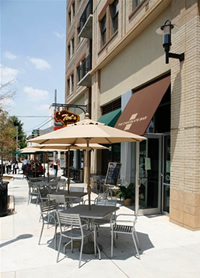 We started
with cava, a sparkling
Spanish wine, then
moved onto a staffer’s recommendation, the chewy, mouth-filling
Windmill
Zinfandel ($10 by the glass), a perfect foil for chocolate. Next
time I
want to try a liquid elixir, one of the signature chocolate
martinis. In
short order, we polished off a bowl of marinated olives, a nice
assortment of
black and green briny beauties and a selection of three cheeses:
Sweet
Grass Dairy fresh goat, Fourme d’Ambert bleu, and Carr Valley Mobay,
an award-winning, layered sheep and goat's cheese separated by
a layer
of grape vine ash. On this visit, we had to pass over the curried
popcorn
and roasted nuts.
We started
with cava, a sparkling
Spanish wine, then
moved onto a staffer’s recommendation, the chewy, mouth-filling
Windmill
Zinfandel ($10 by the glass), a perfect foil for chocolate. Next
time I
want to try a liquid elixir, one of the signature chocolate
martinis. In
short order, we polished off a bowl of marinated olives, a nice
assortment of
black and green briny beauties and a selection of three cheeses:
Sweet
Grass Dairy fresh goat, Fourme d’Ambert bleu, and Carr Valley Mobay,
an award-winning, layered sheep and goat's cheese separated by
a layer
of grape vine ash. On this visit, we had to pass over the curried
popcorn
and roasted nuts.I ordered silky, flavorful finochiona, pork salami flavored with fennel seeds. For dessert, we shared a divine strawberry-rhubarb tart with orange blossom sorbet and pickled strawberries. Only our waistbands prevented us from sampling the watermelon soup and pot de crème. We couldn’t begin in a single visit to work our way through the tempting array of housemade truffles (they also carry a few from
--Suzanne Wright
NEW YORK CORNER
TWO NEIGHBORHOOD RESTAURANTS KEEP GOING FULL TILT
by John Mariani
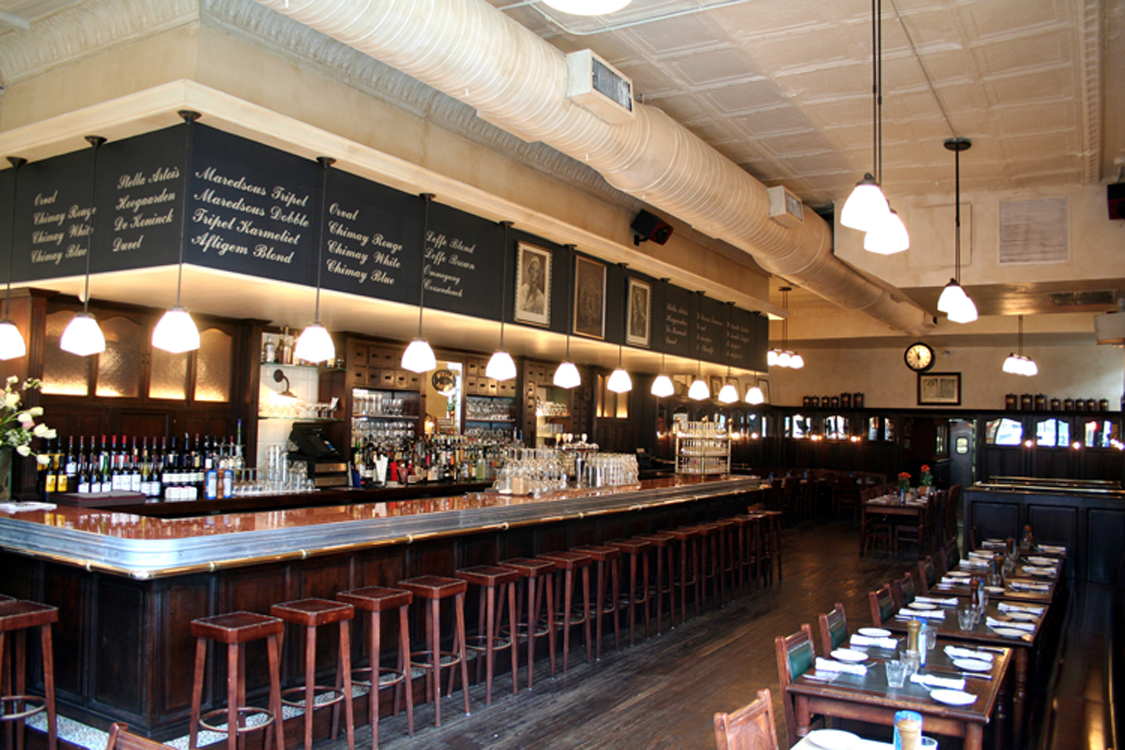 MARKT
MARKT676 Avenue of the Americas
212-737-3314
www.marktrestaurant.com
Markt has moved. One of the early entrants that made the Meat Market District burgeon, Markt has now taken smaller quarters in Chelsea, itself growing into a major gallery region and a neighborhood of young people who frequent favorite restaurants like Red Cat, Trestle on Tenth, and Cookshop.
But the food here is of a kind that brings you back here for specific dishes, the best of them in the Belgian style and accompanied by one of nearly three dozen beers, many on tap. By all means begin with a shellfish tower, bristling with whatever seafood you desire--King crab, shrimp, lobster, clams, and mussels. This last ingredient is exalted at Markt, with six or seven renderings ranging from mussels steamed in Belgian beer to mussels in coconut milk. The portion is large and there's plenty of liquid you can soak up with the baguette bread (although a basket of bread for an entire table contains only a single pat of butter--very chintzy). Also delicious among the starters, which Belgians apparently call voorgerechten, are croquettes of shrimp, golden brown and creamy inside, served with a salad.
Carbonades flamandes is the French name for Stoofvlees op vlaamse wijze, a beef stew cooked in Leffe Brown Beer, and Markt's version is terrific, the beef morsels just the right size, the thick gravy hot and rich. Gentse waterzooi is another Belgian classic, a creamy stew of chicken and vegetables something like Pennsylvania-Dutch chicken and dumplings without the dumplings. The French fried potatoes would be among the best in New York, except that one order came piled with three-inch long pieces, a second with stubby cuts and ends.
Aside from all those beers, Markt carries a commendable winelist of both regional French and American bottlings. We had a good bottle of Sancerre and one of Vacqueyras, both fairly priced. For dessert the warm chocolate tart with pistachio ice cream was good, but housemade sorbets, including one made with beer (beer is not the perfect food for everything yet), were lackluster in both taste and texture.
Markt has more or less the same ambiance it has always had. It's a Belgian brasserie, with lots of dark wood, zinc bar, and a big clock forever stopped at five minutes to midnight. It's cheery, chummy, and neighborly, as is the waitstaff, although the noise level is louder than ever, especially after nine P.M. when they start blasting in canned music. The best tables are quieter because they are outside on the street, and, for some reason I cannot begin to imagine, they and three front tables inside have have nice, clean, bright tablecloths while the rest of the tables inside have dark, bare wood that, as I observed, do not get much of a wipedown before new guests arrive.
If you live in Chelsea, Markt would probably be on your speed dial already. But if you're in the mood for Belgian food done with authority, this might be your place.
Markt is open daily for breakfast, lunch, and dinner. Appetizers run $7-$24 (shellfish at market price), and main courses $12-$36.
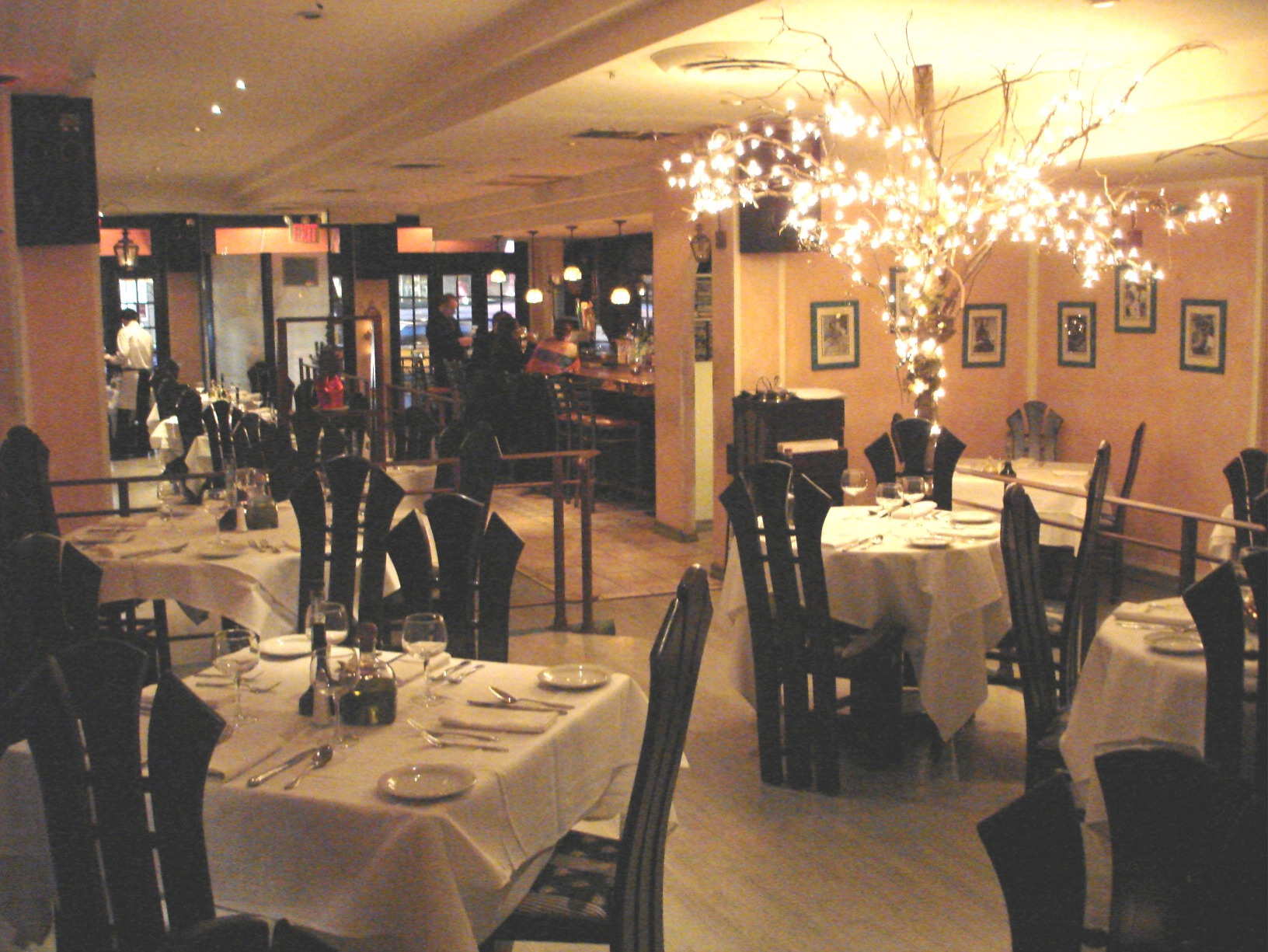 East River Café
East River Café1111 First Avenue
212-980-3144
Time will tell, and for more than 12 years The East River Café has sat on a cozy corner of First Avenue in view of the 59th Street Bridge. In restaurant years, a dozen is a long time and means one thing: The neighborhood has adopted it as a sure thing, a comfortable place to dine and not worry too much about the price or the chef veering off in a trendy direction. If that suggests the place is pat, it is also consistent, and since my last visit five years ago, little has changed and none for the worse.
Chef-owner Sam Marcos works hard to keep it that way, open seven days a week for lunch and dinner, with a very well-priced $11.95 jazz brunch on Saturdays and Sundays. The long dining room, with a copper bar, is done in pastel tones and wooden floor, with nicely spaced tables. Mr. Marcos is much in evidence to guide you through the menu, and the service staff is warm and amiable. On beautiful New York nights people scramble to take the tables outside in view of the bridge and the river.
You'll be happy with the appetizers, which are generous proportioned, like the crisply fried calamari with a tomato dip and the jumbo crabcake with
There is also a pizza section, and though we easily nibbled our way through one with prosciutto, arugula, and "a touch of truffle," it was pretty basic pizza without much flavor.
Ninety percent of the Italian restaurants in America do their best with antipasti and pastas, and East River Café falls into that big majority. Main courses are O.K. if predictable, from the filet mignon in truffle sauce, with broccoli di rabe and roast potatoes, to fillet of sole in a pinot grigio white wine sauce. A pork chop done milanese-style got lost under a rainforest of salad greens.
Desserts are the usual Italian items, from cheesecake to tiramisù.
East River Cafê has succeeded on consistency and playing to its strengths, which are clearly geographic both in its location and its neighborhood. For newcomers, you'll be just as welcome as a regular, which you may well become.
East River Cafe's antipasti run $6-$14, full-course pastas $12-$20, and main courses $16-$26.
NOTES FROM THE SPIRITS LOCKER
![]]](Tequila-Posters.jpg)
I’ve always thought the surf waters off Cabo San Lucas have the same color as a margarita made with blue curaçao. And a tequila sunrise is one of the world’s best-named drinks, because it really is the color of the sun when it edges up from the sea south of Cancun. And if you’ve ever knocked back a sangrita, made with blood orange and tequila, you know the way the color of the sky at sunset off Bahia de Tortugas looks.
Tequila itself, of course, has no color, unless it’s an aged añejo, which takes on a golden hue. It can be fiery, and it is as much a part of the Mexican spirit as Scotch is of Scotland and grappa of Italy. They may now make vodka in France and Malibu, but you’re never going to see a tequila imported from anywhere but the tequila belt around Jalisco.It used to be that every bar in every town in Mexico had maybe three or four tequilas on the shelf, and only a small following strayed from Margaritaville into the treacherous shoals of doing shots, with a lick of salt and lime—a technique called the “Mexican itch.”
These days, however, tequila has become a very varied thing, with producers coming out with a whole range of tequilas that are said to have been the favorite of Montezuma or Dennis Hopper, or made from a recipe discovered in a trunk once owned by Don Diego. As with everything to do with the spirits world, there is a good deal of mere hype in all this, but there is also a good deal of terrific tequila now coming out of Mexico. So, now you go into a Mexican restaurant in La Paz or Los Angeles and you’re likely to see dozens of tequilas arrayed above the bar.
Tequila, whose name comes from a district in Mexico where it is made from the blue agave plant, is a big, ugly artichoke-like plant whose sweet sap, called aquamiel, is roasted, fermented, double-distilled, then drawn off at about 105 proof, afterwards reduced to about 85. By law tequilas have to have at least 51 percent of the spirits in the bottle made from the agave (the rest may come from cane or corn sugar).
Of course the better tequilas are made from 100 percent agave, and that’s when things get interesting: the basic tequila is “white” (blanca) or “silver,” while “gold” is an unaged silver variety colored and flavored with caramel. Reposado ("rested") tequila is aged in wooden tanks or casks for at least two months, and up to nine in wood for the better bottlings. Añejo ("old") tequila is aged in wooden barrels for a minimum of 12 months and up to four years—beyond that age the spirit may take on too much woodiness from the oak barrels.
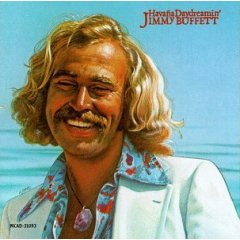 For a long time basic brands like José
Cuervo and Sauza dominated a market that grew on the popularity of
Jimmy
Buffet’s loopy paean to the frozen margarita. You know the way it goes:
For a long time basic brands like José
Cuervo and Sauza dominated a market that grew on the popularity of
Jimmy
Buffet’s loopy paean to the frozen margarita. You know the way it goes:I blew out my flip flop,
Stepped on a pop top,
Cut my heel, had to cruise on back home.
But there's booze in the blender,
And soon it will render
That frozen concoction that helps me hang on.
But true aficionados of tequila, and confirmed tequila cocktail drinkers like myself, wouldn’t think of diluting a good tequila with so much pulverized ice, much less strawberries or bananas. There are too many tequilas now worth drinking straight, and some of the brands have developed a cult following, like Chinaco (which achieved status as a favorite of Jack Nicholson) and Patron—both of which I think are overrated.
Cuervo and Sauza have hopped on the nueva tequila bandwagon with special bottlings whose cost precludes them from being dumped into a cocktail shaker. I like José Cuervo 1800 and their Éspecial (supposedly the world’s bestseller) and Sauza Tres Generaciones. But I am more impressed with the line from Herradura, a 225-year-old producer that uses agaves exclusively from its own farm and no additives. Its reposado, aged for 11 months, is a beauty, golden and richly satisfying, while its Sauza Tres Generaciones, aged five years, should never go near a blender. At close to $400 a bottle, you sip it at sunset in the waters off Baja.
I recently came across a beautifully packaged tequila by Tequilera La Quemada called 4 Copas, aged for
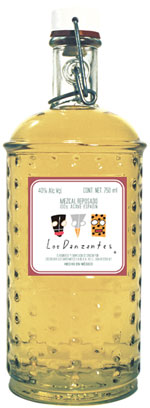 one
year.
Indeed, just putting the hand-blown glass bottle with its gold
caballero design
is pretty impressive, but the faintly gold elixir inside is really
wonderful,
bright, and complex on its own, but subdued to use to make a margarita.
one
year.
Indeed, just putting the hand-blown glass bottle with its gold
caballero design
is pretty impressive, but the faintly gold elixir inside is really
wonderful,
bright, and complex on its own, but subdued to use to make a margarita.No one has ever figured out the origins of the margarita or its name, with claimants abounding from a bar at the Caliente Racetrack in Tijuana to a bartender in Juarez. Whatever the real story, a classic margarita—without strawberries or bananas in it—is one of the world’s great drinks.
Another of the tropical spirits that has gained mucho admirers in recent years is mescal, once considered the brutish stepsister of tequila. But, as these things go, mezcal has gone through a Cinderella process and earned respect for what it is, not for what it is not. Like tequila, mezcal is made from the roasted agave plant, but tequila uses the blue agave and is made in and around Jalisco; mezcal is made all over Mexico, so there is enormous variation in quality. One of the best of the modern mescals is Los Danzantes Mezcal Reposado ($64; right), made in Santiago Matatlán, Oaxaca, from a blend of agaves including the wild Tobalá. It’s not just the smoother finish of this mezcal that makes it unusual but the lush aromas and vanilla behind the agave muskiness that provides such enjoyment. You can put it in a margarita, and it works well, but you can also pour it into a snifter and savor it for a lot longer. For the squeamish: no worm.
For its deep gold color alone Don Julio 1942, made in very small batches from a single still, is extremely smooth, with layers of smoky, vanilla flavors but what really comes through is the flavor of the blue agave itself, unmasked by any impurities because of the refinement of the distillation process. This 60th Anniversary tequila runs about $150 a bottle.
GEE, YOU SURE HAD US FOOLED!

"Holy crap! Who was that vicious bastard on the [Top Chef] judges' panel last night? That angry, mean-spirited snake in the grass...that chained Rottweiler in an ill-fitting jacket, leaning forward on his elbows ready to lunge? Oh, right. That was me. So far this year, I've had the dubious honor of helping to boot off the show an extremely likable, open-hearted orphan with a lilting Southern accent, and now, last night, I got to be part of the hunting party who smashed the hopes and dreams of a cancer survivor. Short of biting the heads off kittens while dressed up as a storm trooper, I don't think I could look any less sympathetic. Believe me, I'm...I'm not like that in real life."--Bourdain's Blog, Bravo TV.com.
 AH,
THE SMELL OF
IT!
AH,
THE SMELL OF
IT!On October 3 in NYC at the Winter Garden Atrium of the
QUICK BYTES
* Beginning Sept. 27 on Miami Beach, Setai announces its private Winemaker Dinner Series (through December), featuring a 5-course meal prepared by Chef Jonathan Wright with the wines of Terrazas de los Andes, with representative Julio Lasmartes.
* The first Wine Garden at the State Fair of Texas will be held in honor of Texas Wine Month, with 135 wineries and 210 commercial vineyards. The Wine Garden is open Friday, Sept. 28- Sunday, Oct. 21, and is located on the fairgrounds at Dallas' Fair Park. Go to www.gotexanwine.org
*
* Hakubai in The Kitano New York patrons save up to 32 percent off the multi-course Kaiseki cuisine with the Early Bird Autumn Special Dinner for $58 pp. from Oct. 9 – Dec. 15, 2007, available for orders placed from
* From Oct. 11-14, the "Taste of Barbados" package offers an array of activities incl. food demos, wine tasting, rum tours, beach barbecues, chef seminars, sugar plantation tours, and more. In partnership with Food & Wine,
* Shaw’s Crab House is hosting its 19th Annual Royster with the Oyster Festival during the third week of October, with nightly oyster specials and the Oyster Slurping Contest each night at both Shaw’s Chicagoland locations. The festival culminates on Oct. 19 with the Tent Party in
* From Oct. 22-28
Everett Potter's Travel Report:
Tennis Resorts Online: A Critical Guide to the World's Best Tennis Resorts and Tennis Camps, published by ROGER COX, who has spent more than two decades writing about tennis travel, including a 17-year stretch for Tennis magazine. He has also written for Arthur Frommer's Budget Travel, New York Magazine, Travel & Leisure, Esquire, Money, USTA Magazine, Men's Journal, and The Robb Report. He has authored two books-The World's Best Tennis Vacations (Stephen Greene Press/Viking Penguin, 1990) and The Best Places to Stay in the Rockies (Houghton Mifflin, 1992 & 1994), and the Melbourne (Australia) chapter to the Wall Street Journal Business Guide to Cities of the Pacific Rim (Fodor's Travel Guides, 1991). Click on the logo below to go to the site.
~~~~~~~~~~~~~~~~~~~~~~~~~~~~~~~~~~~~~~~~~~~~~~~~~~~~~~~~~~~~~~~~~~~~~~~~~
MARIANI'S VIRTUAL GOURMET NEWSLETTER is published weekly. Editor/Publisher:
John Mariani. Contributing Writers: Robert Mariani, Naomi
Kooker, Kirsten Skogerson, Edward Brivio, Mort
Hochstein, Suzanne Wright. Contributing
Photographers: Galina Stepanoff-Dargery, Bobby Pirillo. Technical
Advisor: Gerry McLoughlin.
Any of John Mariani's books below
may be ordered from amazon.com by clicking on the cover image.
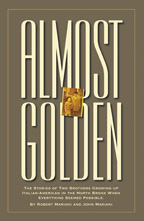 My
newest book, written with my brother Robert Mariani, is a memoir of our
years growing up in the My
newest book, written with my brother Robert Mariani, is a memoir of our
years growing up in the For those of you who don't think of the Robert and I think you'll enjoy this very personal look at our --John Mariani |
 |
 |
 |
 |
 |
 |
copyright John Mariani 2007

